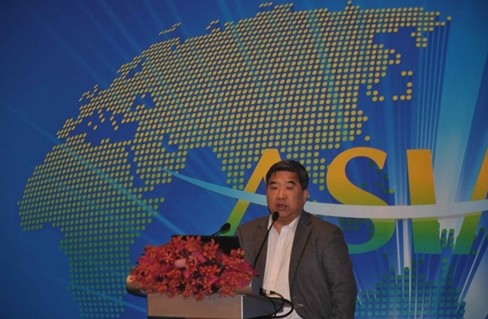

BFA released the Progress of Asian Economic Integration 2014 Annual Report on March 26, 2014.
The report holds that the integration process of Asian economy is still underway. Meanwhile, due to the impact of various complex factors, the trade growth and integration process of Asia show some signs of slowdown.
As for the conclusion that Asian integration is still underway, the report points out that in 2012, the self dependence of Asian trade reached a new historical high. In 2011, the index of self dependence of Asian trade showed a small drop to 54.07% from 54.98% in 2010. The index went up to 59.49% in 2012.
For example, in tourism, the feature of "travel inside Asia" stood further out. In 2012, about 85% of the tourists from East Asia and ASEAN chose to tour within Asia, up by 1% over 2011.
As for the conclusion that Asian economic integration shows signs of slowdown, the report points out that in 2009, the self dependence of the global value chain intermediate goods trade of Asia was 60.9%, and in 2012, it grew slightly to 61.1%. The volume of the global value chain intermediate goods trade within Asia had its quickest growth from 2001 to 2007, with an annual average growth rate at 21%. However, the growth speed began slowing down after 2009. In 2011, the intermediate goods trade volume within Asia grew by 9.2%, and in 2012, the growth rate dropped to 3%.
Another phenomenon was the decreasing or stagnant trend of the total import and export volume within Asia. In 2011, about 57% of Asia's import and export volume came from within Asia. In 2012, the percentage slightly dropped to 56.5%.
In particular, since the outbreak of the global financial crisis in 2008, Asian economies have been stagnant in pursuing financial opening up and have not made any obvious progress.
The report holds that with the trade growth slowing down, the integration process decelerating, and the future development of the global value chain remaining uncertain, Asia needs new driving force. RCEP is a good choice.
The report points out that to ensure RCEP's success, the negotiation should cover comprehensive and in-depth contents. To achieve this, Asia should base RCEP on the existing FTA agreement, make great efforts to promote integration within Asia, integrate the existing articles of "ASEAN+1" FTA Agreement on topics such as tariff, service, investment, and trade facilitation, adopt a more open approach, upgrade the status of IPR in the RCEP negotiation, make the competition policy rules more specific, and make contribution to attaining the goal of Asian-Pacific integration put forth by APEC.
Source: boaoforum.org
Copyright ©1999-2018
Chinanews.com. All rights reserved.
Reproduction in whole or in part without permission is prohibited.